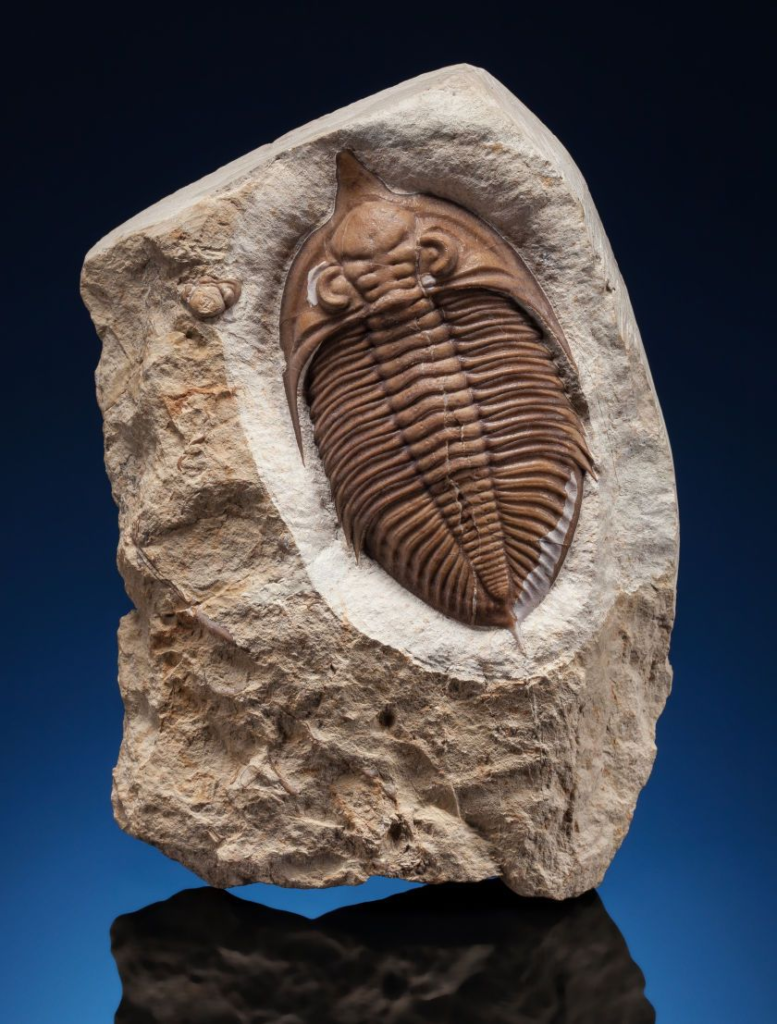
Introduction:
Deep within the annals of Earth’s history lie remarkable creatures that once roamed the ancient seas, leaving behind a fossil legacy that continues to captivate scientists and enthusiasts alike. Among these enigmatic organisms, trilobites stand out as one of the most intriguing and diverse groups of extinct arthropods. These ancient marine creatures flourished for over 270 million years, leaving behind a wealth of fossil evidence that provides invaluable insights into the evolution and ecology of life on our planet. Let us embark on a journey through time to uncover the secrets of trilobites and their enduring significance in paleontology.
Unraveling Trilobite Anatomy and Adaptations:
Trilobites inhabited the oceans from the early Cambrian period to the end of the Permian period, evolving into a staggering array of forms and sizes. These arthropods, distant relatives of modern-day insects, crustaceans, and spiders, possessed a distinctive segmented exoskeleton divided into three lobes, from which their name derives. The head, or cephalon, featured a pair of compound eyes, antennae, and various mouthparts, showcasing remarkable adaptations for feeding and sensory perception. The thorax and pygidium formed the segmented body, enabling trilobites to maneuver and propel themselves through the ancient marine environments they inhabited.
Diversity and Classification:
Trilobites exhibited a remarkable diversity, with over 20,000 described species spanning a vast range of sizes, shapes, and lifestyles. From small, compact forms to elaborate, spiny varieties, trilobites occupied numerous ecological niches throughout their existence. Paleontologists have classified trilobites into various orders and families based on distinct morphological characteristics, such as the presence of spines, the shape of the cephalon, and the arrangement of thoracic segments. This classification system allows scientists to reconstruct the evolutionary relationships between different trilobite groups and track their ecological and geographical distributions.
Paleoenvironmental Insights:
Trilobite fossils serve as invaluable tools for understanding ancient environments and the intricate relationships between organisms and their ecosystems. By studying the abundance, diversity, and distribution of trilobites in sedimentary rocks, paleontologists can reconstruct paleoenvironments with remarkable precision. Trilobite assemblages provide insights into factors such as water depth, temperature, oxygen levels, and substrate types, allowing scientists to paint a vivid picture of ancient marine habitats.
Trilobites as Timekeepers:
Beyond their ecological significance, trilobites also act as vital timekeepers in the geological record. Certain species of trilobites existed for relatively short periods, making them useful biostratigraphic markers for dating rocks and correlating sedimentary sequences across different regions. By examining the fossilized remains of trilobites and comparing them to well-documented species ranges, scientists can establish the relative ages of rocks, refine geological timelines, and unravel the chronology of Earth’s ancient past.
Evolutionary Marvels:
The fossil record of trilobites provides a unique opportunity to study the process of evolution and the development of complex life forms. Over the course of their long history, trilobites underwent various evolutionary innovations, such as changes in size, shape, and locomotion. The study of trilobite fossils enables scientists to explore the mechanisms driving evolutionary change, such as natural selection, genetic variation, and adaptation to changing environmental conditions.
Preservation and Collection:
Trilobite fossils are found in sedimentary rocks worldwide, with notable concentrations in areas like Morocco, the United States, Canada, and China. Fossils can range from exquisitely preserved specimens displaying intricate details of
the exoskeleton and appendages to more fragmented remains. Trilobite enthusiasts and collectors often find joy in hunting for these ancient relics, marveling at the beauty and diversity of the specimens they discover.
Conclusion:
Trilobite fossils stand as a testament to the extraordinary diversity and longevity of life on Earth. These ancient arthropods offer a window into the past, allowing us to glimpse the remarkable adaptations, ecological relationships, and evolutionary processes that shaped our planet over millions of years. By studying trilobites, scientists continue to unravel the mysteries of Earth’s ancient seas, deepening our understanding of the natural history that precedes us. The enduring allure of trilobite fossils ensures that their legacy will continue to inspire and educate future generations.